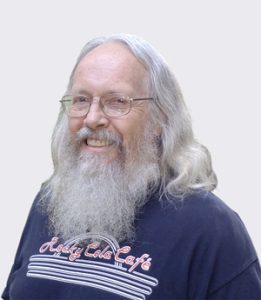Canyon Name Origins – Arroyo Seco
Continuing eastward, we find one last canyon, and it’s a big one. The Arroyo Seco begins almost at Mount Wilson, twists its way through the San Gabriel Mountains, and exits the mountains to form a natural eastern border of La Cañada. It continues south through Pasadena and Eagle Rock until it meets the LA River near downtown. It was named by the Spanish explorer Gaspar de Portola during his expeditions in 1769 and 1770. Apparently in both crossings of the streambed, there was little or no water flowing. The explorers could clearly see that it had carried a great deal of water by its width and uprooted trees along its banks. But Portola named it Arroyo Seco (literally translated “creek dry”).

president of the Historical Society
of the Crescenta Valley and loves local history. Reach him at
lawlerdad@yahoo.com.
Of course the irony is that it usually has a very good flow of water. It was a misnomer. In typical fashion, the Native Americans had a better name for the canyon: Hahamongna, which meant something to the effect of “flowing waters, fruitful valley.” Their village was named Hahamongna as well, and sat about where JPL is today. They were absorbed into the San Gabriel Mission.
The Arroyo Seco was claimed as a water source for the growing city of Pasadena in the 1870s and they developed a small dike across the “Devil’s Gate,” where the Devils Gate Dam is today. The Devil’s Gate was named by Judge Eaton (for whom Eaton Canyon was named) because of a rock formation on the east side that vaguely resembled a devil in profile. The good flow of water through the Arroyo proved a barrier to travel between the Crescenta Cañada valleys and the more developed Pasadena. It could be a harrowing wagon ride to descend the steep banks from La Cañada, ford the often rushing stream, and climb the bank on the other side. This was solved when a metal bridge with wooden floorboards was constructed across the gap in 1893.
The Arroyo Seco was prone to periodic flooding on a massive scale. Floods in 1914 and 1916 tore out downstream bridges, destroyed property and killed dozens of people. In response, local governments built Devil’s Gate Dam in 1920 as the first flood control dam. It was built both to control flooding and to store drinking water for Pasadena. In early photos of the dam, a large lake is visible behind it.
The Arroyo has always been an important recreational area. Higher up in the canyon, cabins and resorts were built, starting in the late 1800s and continuing through the early part of the 20th century. In the “great age of hiking,” the Arroyo Seco had a steady stream of outdoor enthusiasts who made these resorts a tourist destination. By the 1940s, the City of Pasadena closed down the cabins and resorts due to the diminishing water quality downstream. But the Arroyo still is an important day-use destination for hikers and mountain bikers. The Angeles Crest Highway follows the Arroyo up into the mountains, staying high up on its western and northern edge, but providing spectacular views into its depths.
The Arroyo was the site of some early student rocket experiments in the 1930s, that evolved into today’s Jet Propulsion Laboratory. In the early years of JPL, captured German V2 rockets and experimental rocket engines were test fired in the Arroyo. As the “space race” heated up in the 1960s, JPL became ground zero for NASA’s space programs. And today, the unmanned exploration of distant planets is carried out here.
Unlike many of the canyons of the San Gabriels above us, the Arroyo Seco is very easy to access. On the eastern side of the canyon a well-established trail takes hikers and bikers far up the canyon. And on our side, the western side, Hahamongna Watershed Park (formerly Oak Grove Park) allows easy access into the Arroyo Seco.
Once again I thank local historians Marlene Hitt, John Newcombe, Mary Lou Pozzo and Jo Anne Sadler for providing most of the info I needed to write this series. We have some amazing canyons above us, and I hope these articles have made them more interesting to you.
